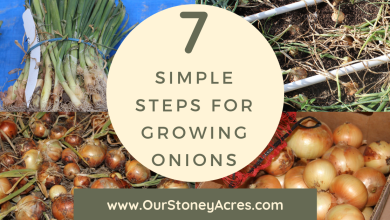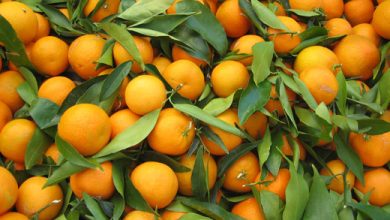What is coconut fiber and how is it used?

The coir is one of the substrates is becoming more fashionable lately. It is much lighter than peat, and also more environmentally friendly since a single coconut palm produces a large amount of fruit, which is where this interesting sustenance for your plants comes from. But what is it and how is it used? What properties does it have?
In this article we are going to tell you everything you need to know about coconut fiber and its properties.
What is coconut fiber?

This substrate is one of the most recommended for terrariums, seedbeds, palm trees, horticultural plants… well, for all types of plants, except for carnivorous ones (it could only do well with Nepenthes, and always mixed with blond peat). As its own indicates, it comes from the coconut, which is the fruit of the Cocos nucifera. Its properties are:
- PH between 5.5 and 6.2, which is suitable for most crops.
- It is capable of retaining nutrients and releasing them progressively. Plus, it helps avoid problems caused by over-fertilizing.
- Retains water; in fact, its fibers act as if it were a sponge, so you can save on irrigation water, something that always comes in handy .
- It facilitates the development of the roots, since it can yield or absorb heat very quickly.
- Maintains the proper balance between water retention and aeration capacity, thus avoiding the problems derived from excess humidity.
If we talk about granulometry, it comes in three types: fine (which looks like normal earth), coarse (which are small pieces), and chip (somewhat larger pieces). In gardening, the fine is used above all, since it is the one that gives the best results in crops
Main features
It is a type of substrate that is perfect for use in seedbeds, terrariums, horticultural plants, palm trees and other types of plants. The only limitation it has in its use is with carnivorous plants. By improving the development of the roots, it manages to maintain balance in order to have a better aeration and water retention capacity. This prevents the plant from having any type of problem in terms of excess moisture.
It is one of the richest substrates in nutrients that are assimilated by plants. Plants need nutrients that they can easily absorb and that provide what they need to develop. It has a high proportion of vitamins A and C and trace elements. Among these trace elements we find vanadium and molybdenum. These two help nitrogen-fixing bacteria to be more active. Among other trace elements in a lower proportion we find manganese, nickel, copper, sodium, titanium and lead.
How is coconut fiber used?

The substrate is one of the most recommended to have perfect plants. However, it is not usually used alone, since it does not have its own nutrients. Therefore, it must be mixed with organic fertilizers, such as worm humus, so that they can grow wonderfully. The ratio is 6: 4 (60% coconut fiber and 40% worm castings). With this mixture, you will obtain an ideal sustenance for your beloved pots.
You can buy coconut coir at almost any specialty garden center. In places for agriculture and crops it can also be obtained. There are some people who make it at home to make it homemade. It can also be purchased from here.
Advantages of its use

Among the advantages that can be obtained from the use of coconut fiber in our plants we find a general benefit. It must be borne in mind that coconut fiber cannot be used by itself as a substrate, since it does not have its own nutrients. The ideal is to mix it with some type of organic substrate such as dot worm humus in this way, we get a quite nutritious mixture for our plants.
We are going to analyze one by one the advantages of using this substrate over others:
- It helps to enhance the production of flowers and fruits: since it has a great aeration power, we find a better environment for the correct development of the roots. Thanks to the coconut fiber, the soil also improves its general structure and facilitates the development and growth of the roots.
- Helps to have healthier and stronger plants: coconut fiber is a type of substrate that has an insulating character. To this we add its aeration capacity and we obtain a more extended protection of the roots against excess humidity. Almost any weakening that the roots may suffer from attacks by pests or fungi can be reduced with this substrate. Another advantage of this part is that it reduces heat to the roots with greater speed. In this way, we achieve auto or regulate the temperature of the garden plants in a natural way.
- It improves crops in a more sustainable way: by having less water losses we can optimize irrigation and, therefore, reduce the amount of water we use. This will help reduce the environmental impact by saving water and having a good management of this resource.
- It solves the problems of water stress of the plants: the plants suffer a water stress when the summers are very hot. The problem with the irrigation system is that there are some parts where the plant suffers the most. This can affect the development of flowers and fruits. With the coconut fiber we will be able to avoid any kind of mistake when it comes to watering and that affects us so much. Thanks to the coconut fiber, the plant will have a rapid rehydration. One of the uses that it has spread is that it can be used as a prophylaxis.
- Facilitates and provides the absorption of mineral salts and vitamins: not only provides vitamins but also helps to absorb them. When harvested from the seashore, coconut fiber is loaded with minerals.
I hope that with this information to learn more about coconut fiber and all the beneficial properties for plants.


![Photo of Vegetables: [Concept, Types, Classification and Examples]](https://www.complete-gardening.com/wp-content/uploads/2022/08/vegetables-concept-types-classification-and-examples-390x220.jpg)

